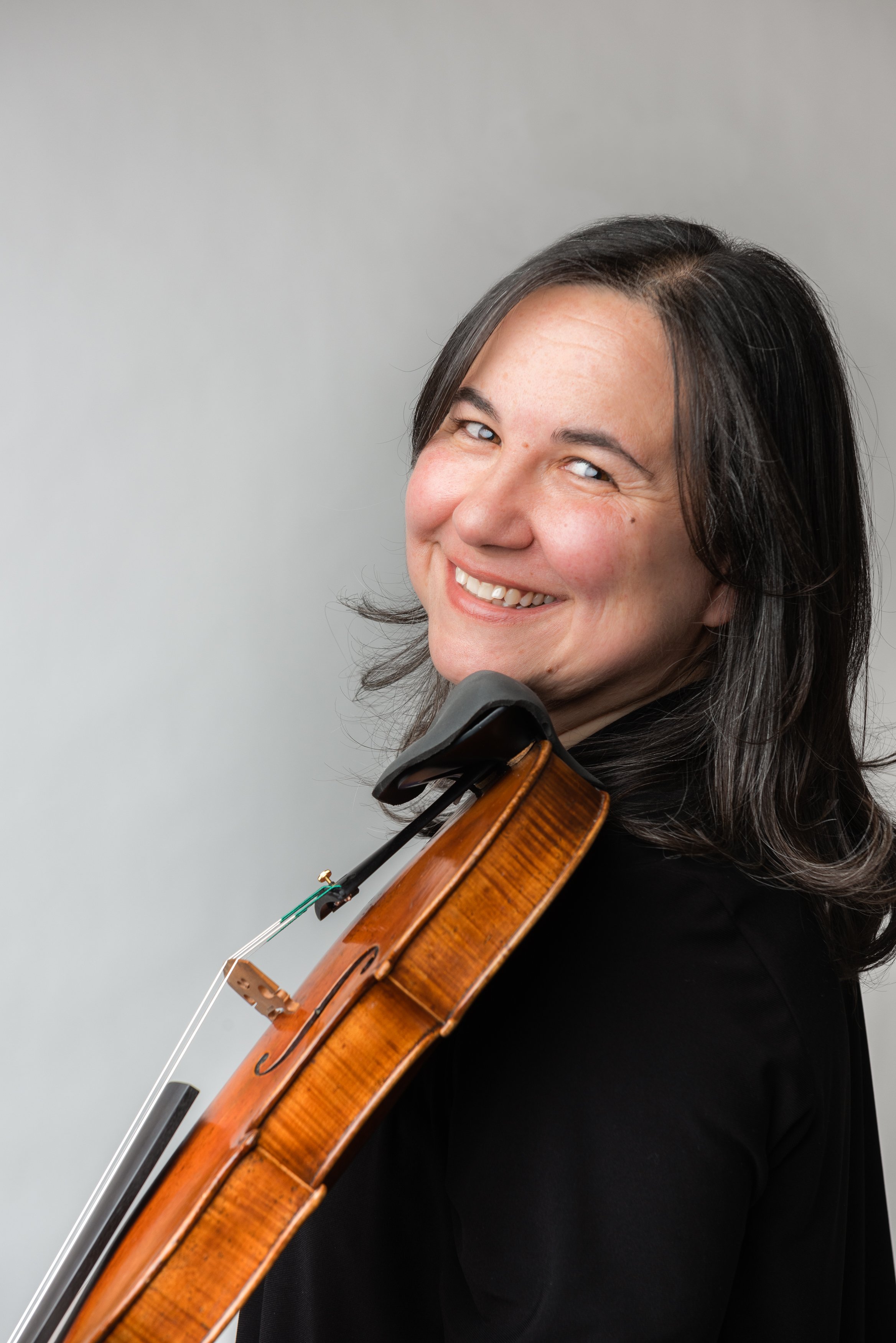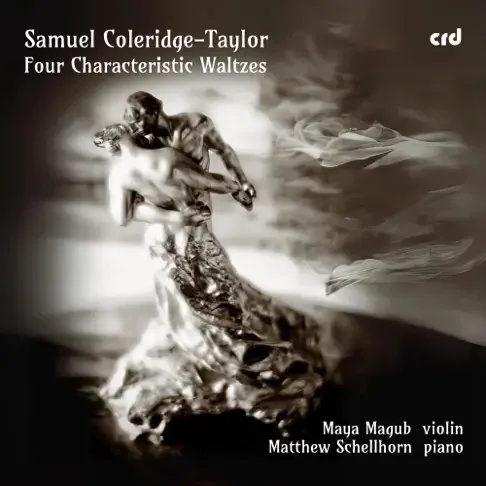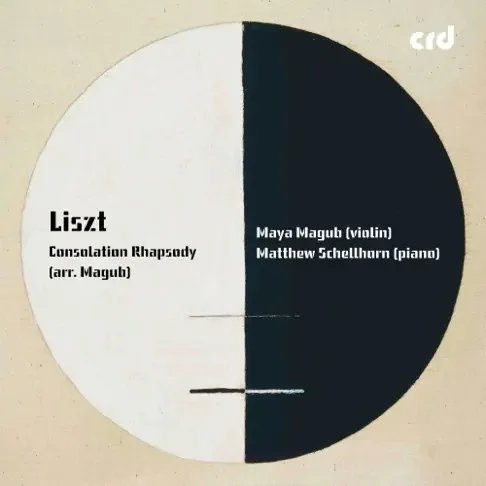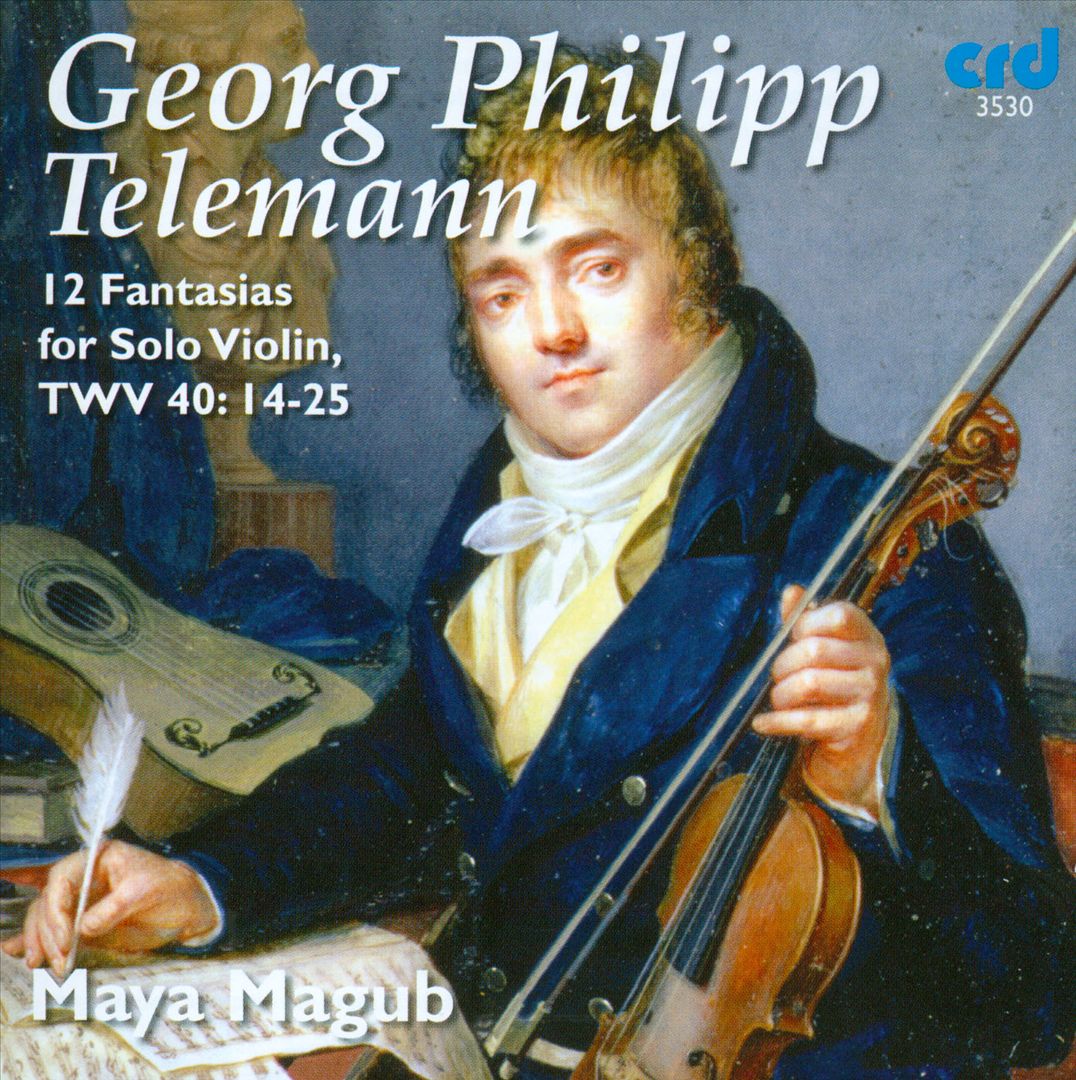
Maya Magub is a British violinist based in LA. Praised by Gramophone for her "endless inventiveness" and by Strad Magazine for "her aristocratic poise, her technical command" and "powerful dynamic range", Maya Magub has performed in many of the world’s greatest concert halls, and on numerous movies and records.
As soloist, Maya has performed concertos by Vivaldi, Mozart, Mendelssohn, Bruch and Tchaikovsky, the complete Brandenburg concertos in London’s St Martin in the Fields, and Dvorak’s “Romance” in the Royal Albert Hall. She has given solo performances for King Charles III and for Professor Stephen Hawking, and has also enjoyed playing with pop icons including Adele, Bono, and Paul McCartney.
Maya studied at the Purcell School, Royal Academy of Music, Cambridge University, and Vienna Hochschule. A founder member of the Mainardi Piano Trio, she has played in chamber music festivals across the globe, and has guested with the Calder Quartet and the Emperor Quartet.
Maya Magub has released many albums on the CRD label, including the music of Telemann, Mozart, Coleridge Taylor and her own arrangements of Liszt.
"Maya Magub succeeds in leading the listener...with so much engagement that it is impossible to turn them off until they’re finished” (Gramophone)
Caroline Gill, Gramophone
British Violinist Magub tackles the Telemann Fantasias
This is second release in as many years of Telemann's vignettes that resolutely succeeds in keeping your attention from beginning to end. The first was their transcription for viola by Ori Kam (Berlin Classics. 8/12), where their main attraction was the warmth brought by bringing their pitch down to something more closely resembling the human voice. That added comfort in the sound made it possible – desirable – to sit and listen to the nearly 50 separate movements that constitute the complete set with out a break, but Maya Magub does not have that luxury of a mellifluous viola tone to help here. She nevertheless succeeds, though, in leading the listener through Telemann's maze of musical mini-experiments with so much engagement that it is impossible to turn them off until they're finished.
She uses both gut and steel strings in the recording, which – combined with a bow that, although not Baroque, is very light – brings a playfulness to the dance-like passages in particular that is underpinned by a solidarity of tone, pitch and consistency that give her freedom to work with the music itself, rather than simply navigate the inherent difficulties in an authentic performance of music this exposed. It means she is able to – and does – bring out all of its contrasting influences; and hearing folk music and polyphony coexist as they do in the first movement of the A major Fantasia, for instance, is so unexpected that it makes listening to this performance a really joyous experience. These pieces were dismissed as student exercises for generations (perhaps in a effort to create a distinction between them and the superior Sonatas and Partitias of Bach), but with Magub's endless inventiveness driving each tiny movement, they shine here for what they really are: free-standing, varied concentrations of beautiful melody and sonority.
Michael Jameson, International Record Review
Duos for Violin and Viola
Linking the four duos for violin and viola by Michael Haydn with the more familiar pair by Mozart on this two-disc set from CRD makes good sense for several reasons, not the least among them being historical. The apocryphal story of how, during a visit to Salzburg in 1783, Mozart found his friend Johann Michael Haydn indisposed (some have suggested due to alcohol!) and unable to complete an urgent commission for six duos, thus jeopardizing his salary, is well known. Mozart selflessly undertook to provide a further two duos to complete the set, finishing them off in just two days, and achievement made yet more astonishing by the fact that he seldom composed instrumental duos, and had written for this instrumental combination only once before, in his magisterial Sinfonia concertante for violin, viola, and orchestra in E flat K364 of 1779.
All six duos are capably played here by violinist Maya Magub and violist Judith Busbridge. They are a well-matched team, whose respective sonorities and temperaments blend pleasingly, resulting in performances that sound for the most part freshly minted and invigorating. As co-members of the London Mozart Players and regular chamber music partners, each has a well-schooled idiomatic grasp of the music's stylistic requirements yet there are no periodist concessions made here . The recording itself (made at All Saints Church, Tooting) is bright and full-sounding; close microphone positioning imparts some noticeable edginess to the violin's upper registers, however.
The Michael Haydn duos will probably be unfamiliar to most collectors, but it would be hard to imagine them much better played than they are here. Magub and Busbridge are adroit and direct in the lively outer movements and find contrasting expressive depths in the slow central sections. The closing variation movement of the Duo in F is probably the finest among them and it is played very alluringly here, with the sonorous lower registers of Busbridge's 1593 Amati instrument shown off to good effect, while Magub's assured handling of the often florid melody lines evinces the improvisatory qualities to which she alludes in her own informative booklet notes.
They face keen competition, however, in the case of the two well-known Mozart duos. Their playing retains the qualities of fresh-sounding directness, but these accounts will certainly not displace long-established catalogue recommendations from Itzhak Perlman and Pinchas Zukerman on RCA (their coupling – Jean-Marie Eclair's Violin Sonata in F major, Op. 3 No. 4 – is less appealing, it must be said, but incomparably played), and Particularly by Arthur Grumiaux with Arigo Pelliccia, reissued on Philips Duo. Philip's outstanding bargain set also includes the Grumiaux Trio's superlative version of the Divertimento for trying orion in E flat, K 563, while this classic account of the dos retains its instant appeal, Grumiaux was a master Mozartian and his partnership with Pelliccia is never less than symbiotic and totally absorbing. The Philips sonics are natural and clearly focused, making this an indispensable set.
Still, there is much to be enjoyed on the new CDR discs, too. There's plenty of spirited and compelling music-making to savor and the new release provides a helpfully complete compendium of both composers' thoughts on the medium
Anna Picard, The Independent
Teleman, 12 Fantasias for Solo Violin, Maya Magub
Published in 1735, Telemann's Fantasias were long dismissed as music for amateurs and compared unfavorably with Bach's Sonatas and Partitias.
Using A modern but light bow and a mixture of gut and steel strings, Magub's elegant performance assesses these delicately flavored miniatures. Telemann's appetite for stylistic experimentation produces some striking textural contrasts, while Magub's decorations are exquisitely understated.
Marc Rochester, International Record Review
Teleman 12 fantasias for Solo Violin, TWV40:14-25
Not to be confused with the earlier set of 12 fantasies for flute, Telemann's fantasias is for solo violin have no obvious unifying factor. They vary in length – ranging between four and eight minutes — and in numbers of sections; most comprise three or four distinct sections but in no consistent fast/slow sequence, while the fifth (in A) stretches over five, most of which are marked either 'Allegro' or 'Presto'. There is no coherent key sequence, some are predominantly contrapuntal, others predominantly lyrical, many include dance passages (although not marked as such), many seem to be heading in the direction of a conventional suite, some include a considerable amount of double and triple stopping, but none seems deliberately focused on any obvious aspect of technique. As Maya Magub suggest in her enthusiastic booklet note for this disc; 'One can imagine the composer, himself a keen violinist, trying out his ideas on the instruments, challenging his virtuosity and, I am sure, having fun.'
Fun is certainly at the root of Magub's performances, not least in the wonderfully jolly gigue which concludes No. 4 (in D) and, while her own virtuosity seems never to be remotely challenged music which is generally regarded as being intended more for the amateur and student then the highly accomplished professional (although Magub disputes that view), she seizes every opportunity to indulge in impressive feats of technical bravado. Defined by great bowing delicacy and subtle use of vibrato, these performances are full of colour and vitality. There is some gloriously agile bowing in the fugal 'Presto' of No. 3 (F minor) and a tremendously effervescent feel to the bucolic 'allegro' of No. 10 (in D). Magub might write that the fugal lines of No. 5 are 'fiendishly difficult to play in such a manner that the listener truly hears the voice– leading of the subject articulated consistently', but in practice she conclusively proves this is not to be so with playing which makes light work of any and every technical obstacle. The graceful 'Siciliana' of number six (in E minor), with its triple-stopped cords, has a lovely mix of lyricism and rhythmic buoyancy, while the richly lyrical 'dolce' which opens No. 7 (in E flat) unfolds with immaculate poise.
The recording, made in a Californian studio, has a somewhat heady residence which does not seem entirely natural. Fortunately, it does not mask the clarity of Magub's playing and actually serves to create an overall sense of unity in music which can come across as a series of short soundbites. While she does not adhere strictly to period practice — she uses a modern bow and combines gut and metal strings — the performance successfully treads the final line between colourful display and stylistic authority to result in a disc of hugely communicative violin playing.
Robin Stowell, The Strad
Stylish performance of Telemann's solo violin fantasias
Maya Magub's accounts confirm her musical allegiances in both modern and period camps — she uses a modified c. 1760 Gagliano violin tuned to a modern concert pitch, a relatively modern bow, a combination of but and metal strings and a mixture of Baroque and contemporary performance practices. She brings to these intricate miniatures an aristocratic poise, and her technical command, extempore ornamentation and flexibility of pulse admirably capture the improvisatory character of each. She also commands a powerful dynamic range and uses vibrato sparingly, producing a varied pallet of total colours.
Magub skillfully conveys the voice–leading in Telemann's polyphony, not only in the quasi–fugal movements (such as the movements of nos. 1, 2 and 5), but also in movements in which dialogue is implicit – sample, for example, the opening movements of nos. 3 and 6. She also deftly captures the humours of individual movements, whether dance-inspired, as in the Vivace of no. 3, or folk-influenced as in the Finale Allegro of no. 10. Tempos are generally well judged, even if the allegro of no. 1 seems too fast on its initial appearance, but some listeners may prefer less reverberation and greater clarity in the recorded sound. Nevertheless, these polished, stylish performances bring Telemann's music to life in an unforced, natural way.
David Threasher, Grammophone
Canons
… “It’s a fascinating idea, and enables each player’s personality to make its mark… and makes an excellent showcase for this group of players. … A truly unexpected pleasure.”
Apple Music
“Magub’s arrangements for strings of Mozart’s canons in two and three parts, recorded here for the first time, are delightful, their wit and charm magnified by high-spirited performances and a close-mic’d sound that ideally suits immersive listening through headphones…”
The Violin Waltzes
From Beethoven and Schubert through to Chopin and Delibes, and still evolving today, the Waltz is a dance form like no other, spanning centuries and continents and able to express joy or sadness, but always making us want to tap our feet! These are Maya’s own arrangements of familiar and less familiar waltzes by these great composers.
Samuel Coleridge-Taylor: Four Characteristic Waltzes
World premiere recording of Coleridge-Taylor’s Four Characteristic Waltzes, in the composer’s own arrangement for violin and piano, written in 1903. These pieces masterfully explore every character the waltz can embody: from the Bohemian flavour of No. 1 (surely inspired by Dvořák, his idol) to the wistful simplicity of No. 2, the serenity of No. 3 and the fire of No. 4. And within each of these, Coleridge-Taylor finds even more variety, giving each waltz its own contrasting middle section.
Consolation Rhapsody
Maya Magub’s own arrangement of Liszt’s early Consolation no.3 (a completely different work to the ‘Lento Placido’ in his later set). Maya weaves into it material from Liszt’s first Hungarian Rhapsody, creating a more substantial work and introducing the violin into the musical conversation. The result is a piece that fully explores the range and virtuosity of both violin and piano, and takes the listener on a musical journey through despair to hope.
The Violin Dances,
Baroque
Maya Magub’s own arrangements of these great character pieces explore all that the Baroque dance has to offer: This album takes the listener on a journey through many different characters, from Handel's stately Gavotte and graceful Minuet to Corelli's bouncy Giga, to Purcell's sailor's Hornpipe (complete with leg kicks!). Including gems like Geminiani's almost heartbreaking Sciciliana - with its characteristic moments of pause mid-beat that feel like a lifted heartbeat. A rich variety, all within the umbrella of the Baroque dance.
Canons
Maya Magub collaborates with string players across the globe. Telemann’s inventive genius shines through in his canonic sonatas, each movement an exact canon yet full of variety and character. Mozart’s miniature and enigmatic canons are arranged here for multiple violins (played by Maya Magub) and string trio. Listen in spatial audio on Apple Music.
“It’s a fascinating idea, and enables each player’s personality to make its mark… and makes an excellent showcase for this group of players. … A truly unexpected pleasure.”
David Threasher, Grammophone
Consolations
The central focus of this album is Maya Magub’s own arrangement of Liszt’s ‘Consolations’. Also featured are much loved gems from the violin and piano repertoire such as the Bach/Gounod Ave Maria and Meditation from Thaïs, combining to create an album of lyricism and consolation.
“The sense of an intimate ensemble they created… is remarkable, as is the quiet virtuosity of their playing… Magub’s tone is a particular joy.”
CD Hotlist.com
This recording sheds new light on these neglected gems of the solo violin repertoire. Maya Magub brings her experience of older performance style to this essentially modern recording. The Fantasias are Telemann at his best, and this recording should convince any skeptic both of the quality of his writing for the instrument, and of the musical depth of these works.
“Magub seizes every opportunity to indulge in impressive feats of technical bravado. Defined by great bowing delicacy and subtle use of vibrato, these performances are full of colour and vitality. … the performances successfully tread the fine line between colourful display and stylistic authority to result in a disc of hugely communicative violin playing.”
International Record Review
The Six Duos for Violin and Viola by Michael Haydn and Mozart brought about a rare but touching story of one composer helping out another. Michael Haydn, younger brother of Joseph, was commissioned to write the six duos on his own, but fell ill. His good friend Mozart swooped in to complete the final two duos. Mozart's attempts to make his own contributions sound like Haydn are obvious, yet the refined hand of the master is unmistakable.
"The Michael Haydn duos will probably be unfamiliar to most collectors, but it would hard to imagine them much better played than they are here."
International Record Review








